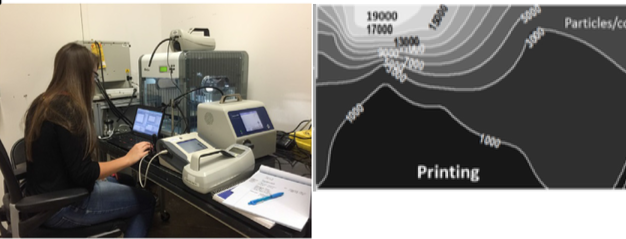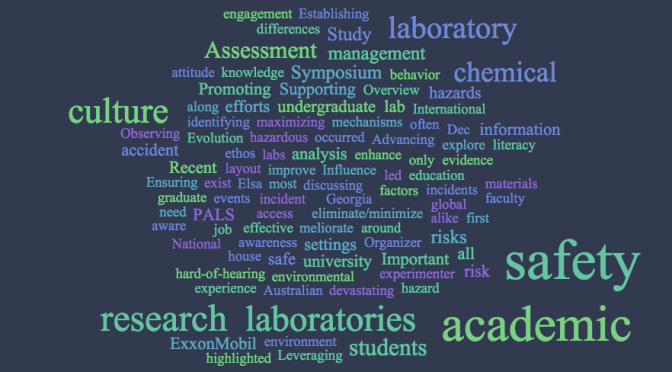The Editor’s Spotlight for the March / April 2017 issue of the Journal of Chemical Health and Safety is shining on:
An exposure assessment of desktop 3D printing by Tracy L. Zontek, Burton R. Ogle, John T. Jankovic, and Scott M. Hollenbeck
A preliminary hazard analysis of 3D printing included process monitoring in two working environments; a small well ventilated materials development laboratory with a Makerbot printer (polylactic acid filament) and a poorly ventilated lab, home-like in terms of room size and ventilation with a Da Vinci XYZ printer (acrylonitrile- butadiene-styrene).
Particle number, size and mass concentration were measured within the printer enclosures, breathing zone, and room simultaneously. Number concentrations were elevated above background typically in the 103 – 105 particles/cm3 range. During printing >99% of the aerosol number concentration was within the ultrafine particulate (UFP) and nanoscale size range. Condensed aerosol emissions from the Da Vinci XYZ printer was examined by Fourier infra-red spectroscopy and suggested isocyanic acid and n-decane as two possible chemical components. Light microscopy and transmission electron microscopy with energy dispersive analysis by X-ray identified individual and aggregated particles highly suggestive of combustion, accompanied by a variety of metallic elements.
Adverse health effects associated with 3D printing related to chemical vapor off-gassing in well ventilated space appears to be low. At this point the significance of ultrafine particle emission is under growing suspicion in its relationship to inflammatory, pulmonary, and cardiovascular effects. Preliminary recommendations for particulate control developed from this analysis are based on good industrial hygiene practice rather than compelling adverse health effects.
You can download the complete article here. An exposure assessment of desktop 3D printing



